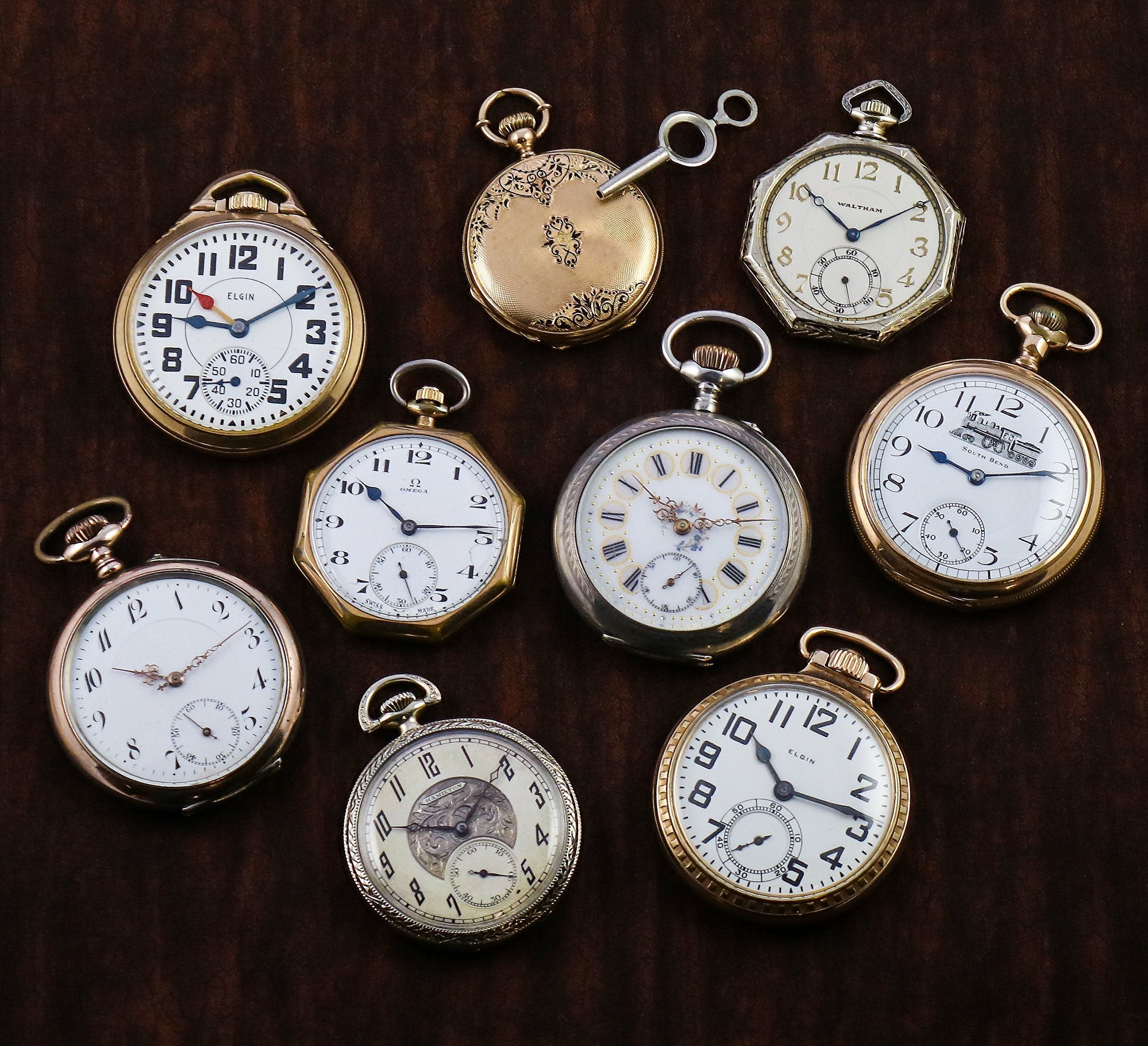
June29
Antique Pocket Watches
Article by: Joseph Denaburg
Pocket watches are coming back in vogue as society once again realizes that the finer things in life aren’t necessarily the most expensive. Initially referred to as pocket clocks, these stylish watches have a long and interesting history predating wristwatches by at least four centuries. Whether you are looking for antique pocket watches, or a more modern style, these cool pieces of jewelry will make a fabulous addition to any wardrobe.
Pocket watches were not originally mass produced, and their accuracy depended entirely on the watch maker who crafted them. This changed in 1891 when a horrific train collision was caused in Kipton, Ohio by an engineer’s pocket watch that had stopped for four minutes. The American Railway Association established standards after that disaster and all pocket watches that reflected those exacting specifications were designated Railroad Approved. These standards include specifications such as a minimum of 21 jewels, the ability to keep time to within 30 seconds per week and able to function in temperatures ranging from 34° to 100° Fahrenheit. The winding stem must be at the 12 o’clock position and the numerals must be bold, black Arabic on a white dial with black hands.
Pocket watches come in a variety of sizes ranging from 0 through 20 with 20 being the largest. A size 18 watch has a dial plate about 1 ¾” across while a 12 measures about 1 9/16” across. A railroad approved watch would be a size 16 or 18.
The case of a pocket watch can be open faced or have a lid referred to as a hunter’s case. Hunter’s cases can really make a pocket watch special; it can be personalized, engraved or stamped with a picture or design. Old railroad watches often had locomotives engraved on the back but with a hunter’s case the design can be visible to everyone when you remove the watch from its pocket. A hunter’s case has a spring latch that flips the cover open so you can see the face. A half hunter has a lid that allows you to see the face while protecting the crystal. The double hunter has an extra lid that protects the back of the watch and the half double hunter has a lid on the back and half a lid in the front so you can see the time without opening the lid.
Some pocket watches have extra features such as a compass built into the hunter case or a cigar cutter. Others have a second hand, a sun/moon dial, moon phase dial or day and date feature. You can choose from a mechanical wind watch or a self-winding one if you’re choosing a modern brand.
You can keep a pocket watch on a chain that attaches to a buttonhole with a T-bar or clips to a lapel or belt loop. The watch itself is kept in a vest pocket, pants pocket or small “fifth pocket” that jeans are still manufactured with. Watch chains were very popular gifts at this watch’s height of popularity in the Victorian era and can lend your outfit an air of understated elegance or casual good taste.
A pocket watch makes an ideal gift that lasts a lifetime and can be passed down through generations. They are unique, can be personalized, and have a real monetary value. They are commonly given as groomsmen gifts, for graduations, retirements or birthdays; you can give one to yourself as a wardrobe accessory that will compliment any suit or semi-casual style.

